
核能与环境:中法三院核能合作:a collaborative programme between chinese and french academies:第二期:Phase Ⅱ
正版图书,可开发票,请放心购买。
¥ 121.75 6.8折 ¥ 178 全新
库存45件
作者中国工程院,法国国家技术院,法国科学院编著
出版社科学出版社
ISBN9787030764812
出版时间2023-09
装帧平装
开本其他
定价178元
货号14457412
上书时间2023-12-17
- 店主推荐
- 最新上架
商品详情
- 品相描述:全新
- 商品描述
-
目录
目录
综述与建议1
0.1核电厂和燃料循环设施正常运行期间的环境影响1
0.1.1核能对全球环境的影响1
0.1.2核能对当地环境的影响2
0.2核电厂及核燃料循环设施在事故情况下的影响3
0.3放射性废物管理的影响4
0.4利用核与辐射安全、安保措施来降低环境影响5
第1章引言6
1.1能源需求趋势6
1.2脱碳承诺,以及不同发电能源C02排放情况8
1.3环境保护要求核能可持续发展8
1.4本报告内容和结构10
第2章核电厂和核燃料循环设施正常运行期间的环境影响11
2.1如何衡量核能的环境影响12
2.1.1核能对环境的主要影响12
2.1.2环境释放13
2.1.3评价13
2.1.4方法14
2.2核能的流出物、辐射影响及解决方案14
2.2.1核电厂的流出物及辐射影响14
2.2.2核燃料循环的流出物及辐射影响17
2.2.3辐射监测和监控19
2.2.4电离辐射的生物效应20
2.2.5放射性物质的运输20
2.2.6利益相关方参与21
2.3核能发电与其他能源发电的环境影响比较22
2.3.1土地占用23
2.3.2建造材料24
2.3.3取水和用水25
2.3.4常规退役废物28
2.3.5关键材料28
2.4新技賴望28
2.4.1减少燃烧燃料的碳排放29
2.4.2嬗变技术30
2.4.3其他优选技术32
2.5结论32
附录2-1关于中国的具体情况34
附录2-2核厂址周围大型流行病学调查(案例与结果)36
第3章乏燃料和放射性废物管理38
3.1放射性废物管理的原则、策略和框架39
3.1.1放射性废物管理原则39
3.1.2放射性废物管理策略40
3.1.3放射性废物管理框架42
3.2放射性废物的特性和分类44
3.2.1乏燃料和/或后处理放射性废物44
3.2.2放射性废物的特性45
3.2.3放射性废物的分类47
3.3放射性废物处理和流出物排放48
3.3.1放射性废物最小化48
3.3.2流出物排放49
3.4放射性废物处置50
3.4.1极低放废物(VLLW)50
3.4.2短寿命低中放废物(LIL-SLW)51
3.4.3长寿命低放废物(LL-LLW)52
3.4.4长寿命中放废物(IL-LLW)和高放废物(HLW)52
3.4.5铀燃料循环(铀矿开采)前端产生的仅含有天然放射性核素的放射性废物55
3.5开式/闭式核燃料循环产生的废物56
3.6新技术57
3.7结论58
附录3放射性废物处置设施59
A3.1法国59
A3.2中国60
第4章严重核事故62
4.1核电厂严重事故63
4.1.1三里岛核电厂事故63
4.1.2切尔诺贝利核电厂事故64
4.1.3福岛第一核电厂事故66
4.2为降低事故环境影响采取的改进措施68
4.2.1反应堆技术提升68
4.2.2核电厂在福岛第一核电厂事故后的行动69
4.2.3严重事故管理70
4.2.4对于未来类似严重事故的见解72
4.3结论73
附录4-1第三代压水堆严重事故专用预防和缓解措施74
附录4-2中国内陆核电厂的安全性75
附录4-3中国严重事故后应急组织管理76
A4-3.1中国的三级核应急体系77
A4-3.2核应急监测体系77
第5章核安全与环境79
5.1核电厂的安全性及其环境影响80
5.1.1严重事故及其后果81
5.1.2风险指引的纵深防御体系82
5.1.3新的安全威胁因素84
5.2核电厂选址85
5.3安全责任及政府职责86
5.3.1运营单位的主要责任86
5.3.2政府和监管机构的职责和作用87
5.4核安全与公众接受度87
5.5结论88
附录5-1核安全监管体系89
附录5-2中国采取的行动90
第6章结论92
参考文献96
词汇表101
后记106
Contents
Synthesis and recommendations 108
0.1 Impacts from NPPs and nuclear fuel cycle facilities under normal operation 109
0.1.1 Nuclear energy and global impacts on the environment 109
0.1.2 Nuclear energy and local impacts on the environment 109
0.2 Impacts from NPPs and nuclear fuel cycle facilities in accidental situations Ill
0.3 Impacts from radwaste management 112
0.4 Nuclear and radiation safety/security as a tool to prevent impacts on the environment 113
Chapter 1 Introduction 115
1.1 Trends in energy demand 115
1.2 Decarbonization commitment and CO2 emissions by various energy options 117
1.3 Environmental protection as a requirement to make nuclear energy sustainable 119
1.4 Report contents and organization 120
Chapter 2 Environmental impacts during normal operations of nuclear power plants and nuclear fuel cycle facilities 122
2.1 How to measure impacts of nuclear energy on the environment 123
2.1.1 Main impacts of nuclear energy to the environment 123
2.1.2 Releases to the environment 124
2.1.3 Assessments 125
2.1.4 Methodology 126
2.2 Effluents,radiological impacts of nuclear energy and solutions 126
2.2.1 Effluents and radiological impacts of NPPs 126
2.2.2 Effluents and radiological impacts of nuclear fuel cycle 129
2.2.3 Radiation monitoring and surveillance 131
2.2.4 Biological effect of ionizing radiation 132
2.2.5 Transportation of radioactive materials 133
2.2.6 Participation of stakeholders 134
2.3 Environmental impacts of nuclear energy compared to other sources of electricity .135
2.3.1 Land occupation 137
2.3.2 Materials used for construction 138
2.3.3 Water withdrawal and consumption 139
2.3.4 Conventional waste from decommissioning 143
2.3.5 Critical materials 144
2.4 New technology perspectives 144
2.4.1 Reducing Carbon emissions of burnt fuels 144
2.4.2 Transmutation technologies 145
2.4.3 Other advanced technologies 148
2.5 Conclusions 149
Appendix 2-1 More specific considerations about the Chinese situation 151
Appendix 2-2 Large scale epidemiological studies around nuclear sites (cases and results) 153
Chapter 3 Spent fuel and radwaste management 157
3.1 Principles, strategies and framework of radwaste management to prevent environmental impacts 159
3.1.1 Principles of radwaste management 159
3.1.2 Strategies of radwaste management 159
3.1.3 Frameworks of radwaste management with respect to the environment 163
3.2 Specific characteristics and classification of radwaste 166
3.2.1 Spent fuel or reprocessing rad waste 166
3.2.2 Specific characteristics of radwaste versus the environment 168
3.2.3 Classification of radwaste versus the environment 170
3.3 Processing and discharge of radwaste 172
3.3.1 Minimization of radwaste 172
3.3.2 Discharge of effluents 174
3.4 Disposal of radwaste 174
3.4.1 Very low-level waste (VLLW) 174
3.4.2 Low and intermediate level-short lived waste (LIL-SLW) 175
3.4.3 Low level-long lived waste (LL-LLW) 177
3.4.4 Intermediate level-long lived waste (IL-LLW) and high level waste (HLW) 178
3.4.5 Radioactive waste containing only natural radionuclides from the front-end of uranium fuel cycle (uranium mining) 181
3.5 Open/closed nuclear fuel cycle 184
3.6 New technologies 185
3.7 Conclusions 186
Appendix 3 188
A3.1 French side 188
A3.2 Chinese side 189
Chapter 4 Severe nuclear accidents 191
4.1 Severe accidents 192
4.1.1 Three Mile Island accident 193
4.1.2 Chernobyl accident 195
4.1.3 Fukushima Daiichi accident 197
4.2 Improvements to make nuclear energy free of environmental impacts in case of accident 200
4.2.1 Improvements in reactor technologies 200
4.2.2 NPP action after Fukushima Daiichi accident 202
4.2.3 Severe accident management 203
4.2.4 Insights on similar severe accidents in future 206
4.3 Conclusions 207
Appendix 4-1 Dedicated prevention and mitigation measures for severe accidents of Gen-JH NPPs 208
Appendix 4-2 Safety of inland NPP in China 210
Appendix 4-3 Emergency management after severe accidents in China 212
A4-3.1 Three level nuclear emergency system in China 213
M-3.2 Nuclear emergency monitoring system 214
Chapter 5 Nuclear safety and the environment 216
5.1 The safety of nuclear power plants and their environmental impact 218
5.1.1 Severe accidents and their external consequences 218
5.1.2 Risk-informed defence in depth 221
5.1.3 New safety threats 223
5.2 NPPs sitings 224
5.3 Responsibility for safety and role of the government 226
5.3.1 The prime responsibility of the operator 226
5.3.2 The role of the government and the regulator 228
5.4 Nuclear safety, and public understanding 229
5.5 Conclusions 230
Appendix 5-1 Nuclear safety regulation system 231
Appendix 5-2 Actions taken in China 232
Chapter 6 Conclusions 235
References 240
Glossary 245
Postscript 250
内容摘要
本报告涵盖核能的许多领域,试图为多个领域(未来能源构成中核能的定位,核能的优缺点,研发前景,技术、安全和工程情况等等)以及社会问题(教育、培训、风险认知、公众认识等等)提供客观的综述,但是也应承认报告远非尽善尽美。比如,核电厂寿期、运行延寿、退役等重要问题以及核能经济性的诸多方面问题都未述及。本报告也没有试图对核能与所有发电方式、及各自的优缺点进行比较。尽管专家组注意到当前某些核电站项目遭遇的难题,但是本研究并未一对一地研究这些问题,或尝试讨论相关困难。这些问题被认为终将会被克服,而本报告应聚焦于有助于促进未来项目开发和完成的方法和工具上,尤其是基于数字化的方法工具。本研究无意介入核能现行商务、管理、融资问题或商业谈判。本研究旨在在中法两国三院合作下起草共同声明,现均已体现在本报告中,虽然中法两国的视角和国情并不接近相同。
精彩内容
本报告涵盖核能的许多领域,试图为多个领域(未来能源构成中核能的定位,核能的优缺点,研发前景,技术、安全和工程情况等等)以及社会问题(教育、培训、风险认知、公众认识等等)提供客观的综述,但是也应承认报告远非尽善尽美。比如,核电厂寿期、运行延寿、退役等重要问题以及核能经济性的诸多方面问题都未述及。本报告也没有试图对核能与所有发电方式、及各自的优缺点进行比较。尽管专家组注意到当前某些核电站项目遭遇的难题,但是本研究并未一对一地研究这些问题,或尝试讨论相关困难。这些问题被认为终将会被克服,而本报告应聚焦于有助于促进未来项目开发和完成的方法和工具上,尤其是基于数字化的方法工具。本研究无意介入核能现行商务、管理、融资问题或商业谈判。本研究旨在在中法两国三院合作下起草共同声明,现均已体现在本报告中,虽然中法两国的视角和国情并不接近相同。
相关推荐
-
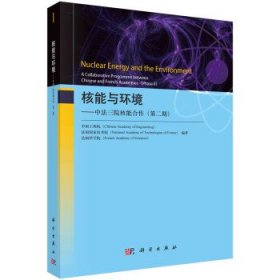
核能与环境——中法三院核能合作(第二期 )
全新长沙
¥ 100.10
-

核能与环境——中法三院核能合作(第2期)
全新北京
¥ 128.56
-
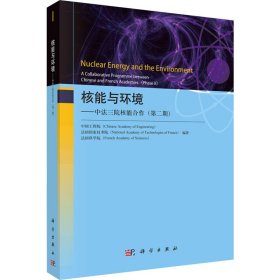
核能与环境——中法三院核能合作(第2期)
全新南京
¥ 133.50
-

核能与环境——中法三院核能合作(第二期 )
全新保定
¥ 92.10
-

核能与环境——中法三院核能合作(第二期 )
全新无锡
¥ 119.26
-

核能与环境——中法三院核能合作(第二期 )
九品北京
¥ 104.30
-

核能与环境——中法三院核能合作(第二期 )
九品北京
¥ 104.76
-

核能与环境——中法三院核能合作(第2期)、
全新北京
¥ 128.57
-

核能与环境——中法三院核能合作(第2期)
全新成都
¥ 124.50
-

核能与环境——中法三院核能合作(第二期 )
全新北京
¥ 85.44
— 没有更多了 —











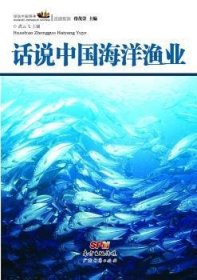

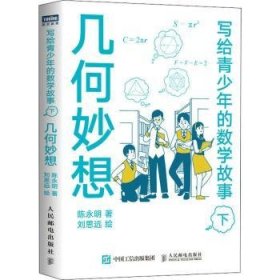



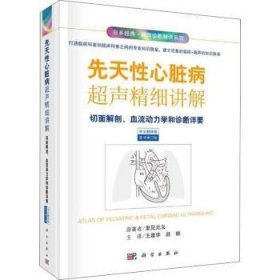



以下为对购买帮助不大的评价